Considering the Developmental Domains When Program Planning
Planning activities for children can be a great way to foster their development across all domains. And when we plan for activities that are well rounded and touch on all of the developmental domains, we can feel confident that we are offering unique opportunities for children to learn, grow, and meet their fullest potential.
So what areas of development should we be focussing on, and can we always hit on each developmental domain with every activity?
We believe the answer is yes!
Developmental Domains
There are 4 main developmental domains that are widely recognized across the early learning field, with a couple extra domains having been added in recent years as we learn more about child development across the lifespan.
The four main developmental domains are:
- Cognitive
- Physical
- Social-Emotional
- Language
Each developmental domain both supports and is supported by the others which means they are all dependent on one another.
Understanding Developmental Domains
In order to support development across each of the domains we must first understand them. Click on each domain below to learn more.
The cognitive domain pertains to the brain and refers to the ability to mentally process information. Thinking, reasoning, and understanding the world around you is all attributed to the cognitive domain.
Cognitive skills are important for personal growth and development, as well as academic and career success.
The physical domain in early childhood development refers to a child’s physical growth, motor skills, and overall health.
This includes physical health, strength, coordination, and dexterity. It also involves developing skills related to gross and fine motor movements, such as crawling, running, jumping, and throwing a ball.
It is important to provide children with plenty of opportunities to explore and interact with the world around them in order to support healthy physical development.
The social-emotional domain is one of the most important aspects of development. It refers to the ability to recognize, express, and manage emotions, as well as to interact with others in a socially appropriate manner.
This is often broken down into five major components: self-awareness, self-regulation, internal motivation, empathy, and social skills.
Together, these five components make up the social-emotional domain, which is essential for successful functioning in life.
Language domain in early childhood refers to the acquisition and comprehension of verbal and non-verbal language.
During this period, children learn to understand and use communication to express their needs and feelings. This includes the ability to understand and use words and sentences, as well as the development of grammar, pronunciation, and phonological awareness.
Additionally, children learn to understand and use non-verbal communication, such as body language and facial expressions, to interpret and express emotions. As they progress in their language development, children can engage in conversations, recognize and interpret stories, and use language to learn and interact with their environment.
When we look at all of the developmental domains as a whole, it’s easy to see why it’s important to weave them through every activity and experience we provide the children in our care. But how do we do it?
Including Developmental Domains in Activity Planning
When planning activities for children, it’s important to consider the different developmental domains and to include them in a variety of different ways.
There are the obvious ways in which we can foster development in each of the domains, ie: providing opportunities to run and jump supports physical development. But how can we ensure that we are touching on each developmental domain when it’s not so obvious?
Take for example, sensory bins. When we consider sensory bins, it might not be immediately obvious how this activity can foster development in each of the domains. But upon further consideration, it becomes easier to visualize how to create or adapt a sensory bin experience so that it touches on all domains.
Sensory Bin Example
To help connect the dots when it comes to understanding the developmental domains, let’s take a closer look at each of the developmental domains, but this time we’ll talk about each domain and how it can be supported through sensory bins.
Sensory bins are an excellent way to support cognitive development in children because they are designed to provide stimulating sensory experiences. The combination of tactile elements, such as objects to explore, liquid to pour, and textured materials to feel, helps children to develop the understanding of concepts such as spatial awareness, pattern recognition, size and quantity, more and less, hot and cold, and the list goes on.
Additionally, sensory bins can also support cognitive development by allowing children to engage in problem-solving activities, as they use their hands and minds to explore the items in the bin.
When children are given the opportunity to explore their environment in this way, they become more engaged in the learning process and develop a greater understanding of the world around them.
Added items that support cognitive development: Figures and small toys that help create stories, materials with different textures, items for sorting, scooping, and transferring, liquids of different temperatures, items that are similar but in varying sizes.
Sensory bins are a great way to support physical development in children because they provide a variety of tactile experiences that help them to explore, discover, and develop their motor skills.
The materials in the bin allow children to manipulate, move, and explore different textures and objects, which can help them to develop fine motor skills, hand-eye coordination, and coordination between their two hands.
Added items that support physical development: textured sponges or foam shapes, scoops and strainers, rubber tubing and spools, balls of various sizes and textures, funnels and cups, and pipe cleaners.
Sensory bins are an excellent way to support social-emotional development in children because they provide a safe and interactive environment for kids to explore their senses.
Through the use of different textures, colors, and materials, children can engage in sensory exploration. This helps them to develop their sensory processing skills, which are important for emotional regulation and self-expression. For instance, a child might use materials like sand or water to engage in calming activities like scooping and pouring.
Sensory bins also provide opportunities for children to play together or parallel to one another, helping to foster relationship skills. Children learn how to interact with one another, share materials, take turns, and solve problems.
Added items that support social-emotional development: small animals or puppets, items that support collaboration (like foam blocks), and singular items that require children to take turns (like one shovel, one scoop, etc).
Sensory bins are an excellent way to support language development in children because they provide a fun, interactive way to build vocabulary and encourage communication in a low-pressure environment.
Sensory bins provide children with an opportunity to talk about what they are experiencing within the sensory bin, and for adults to support language by modelling and expanding on the communication that occurs.
Sensory bins can also help children to develop fine motor skills as they explore the items in the bin, which helps build a strong foundation for future writing.
Including an element of text within the bin, or a story to go along side, is a great way to foster phonological awareness and set the stage for future reading.
Added items that support language development: letter and number blocks, books, miniature signs, vocab words, letter and number shapes, letter and number beads, flashcards.

Sensory Bin Cheatsheet
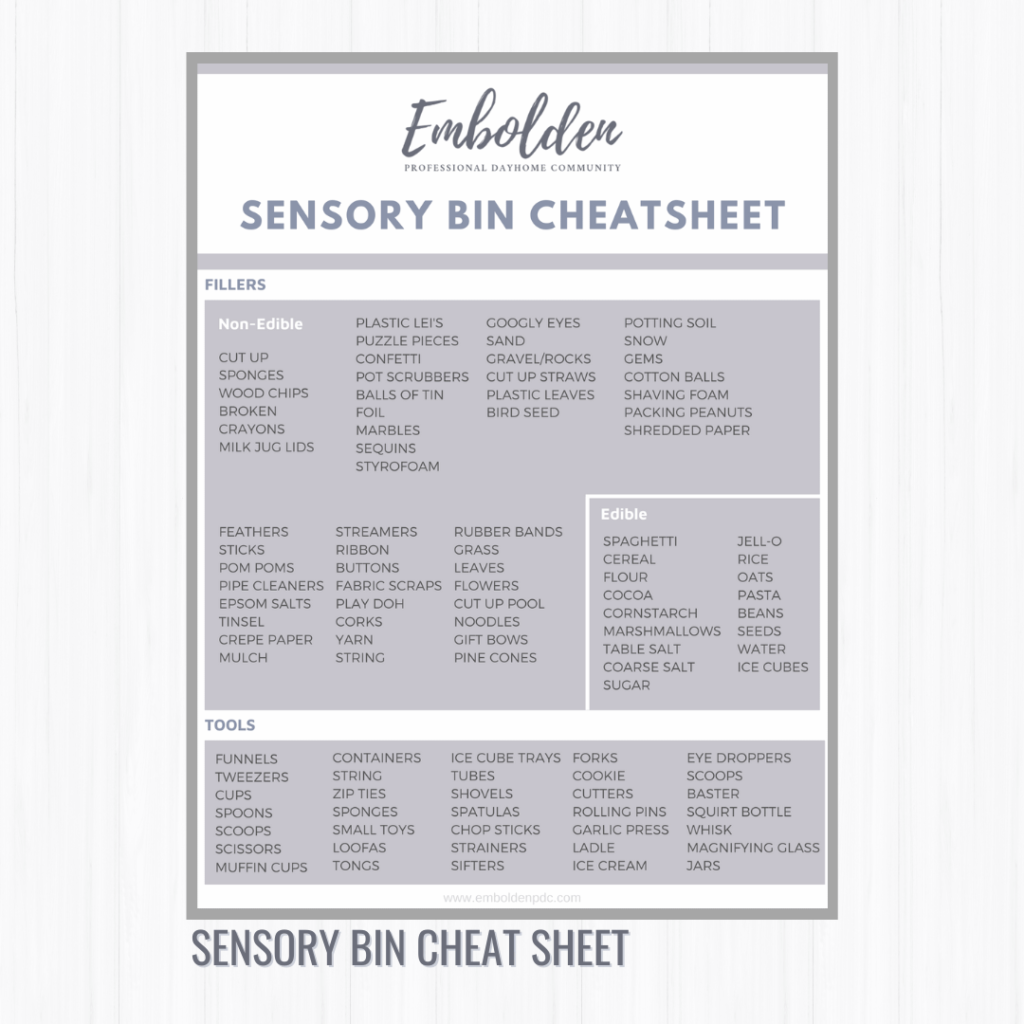
Grab our Sensory Bin Cheatsheet to help get your planning off to a strong start.
45 FILLER IDEAS
35 TOOL IDEAS
Activity Planning Template - Dayhome Planning Binder
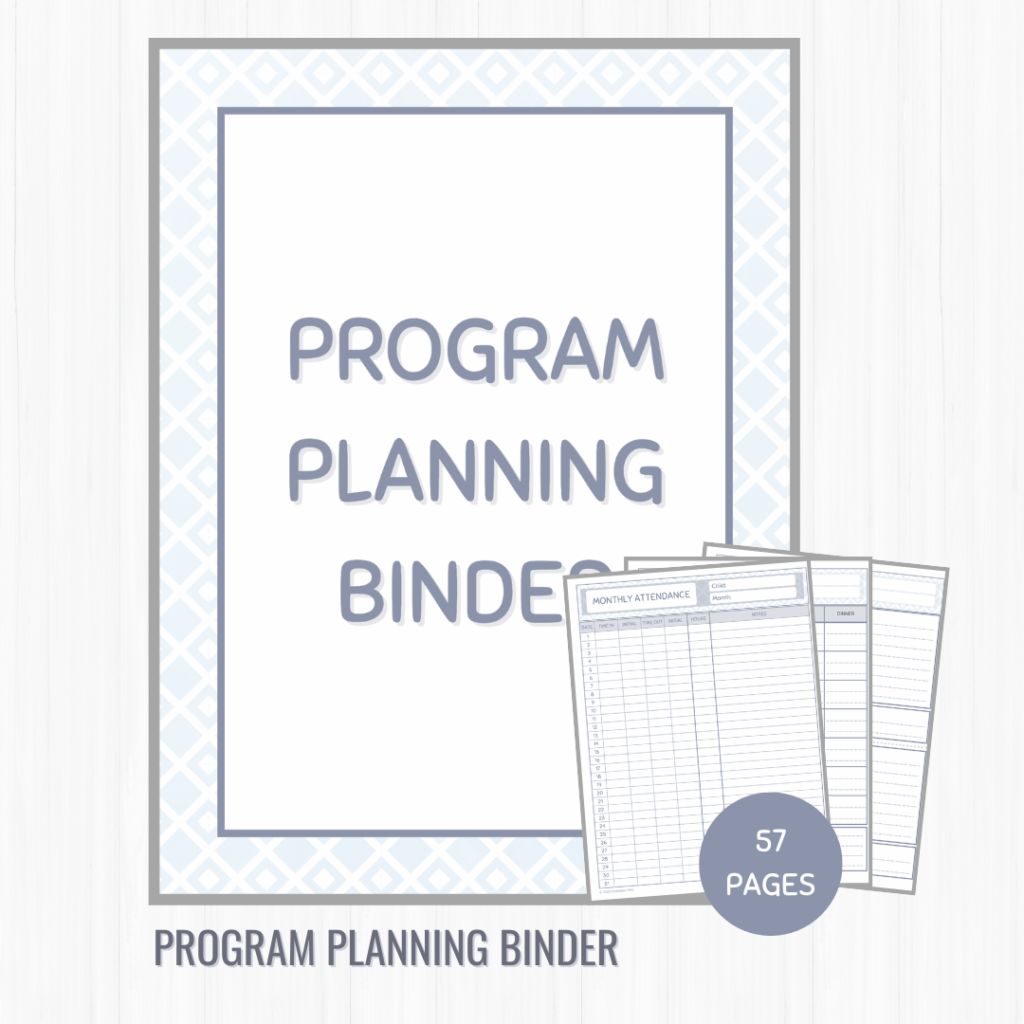
Inside our Planning Binder, you’ll find a variety of different templates to help you make the most out of your program planning.
With templates for:
-Weekly Activity Planning (2)
-Special Event Planning
-General Activity Planning
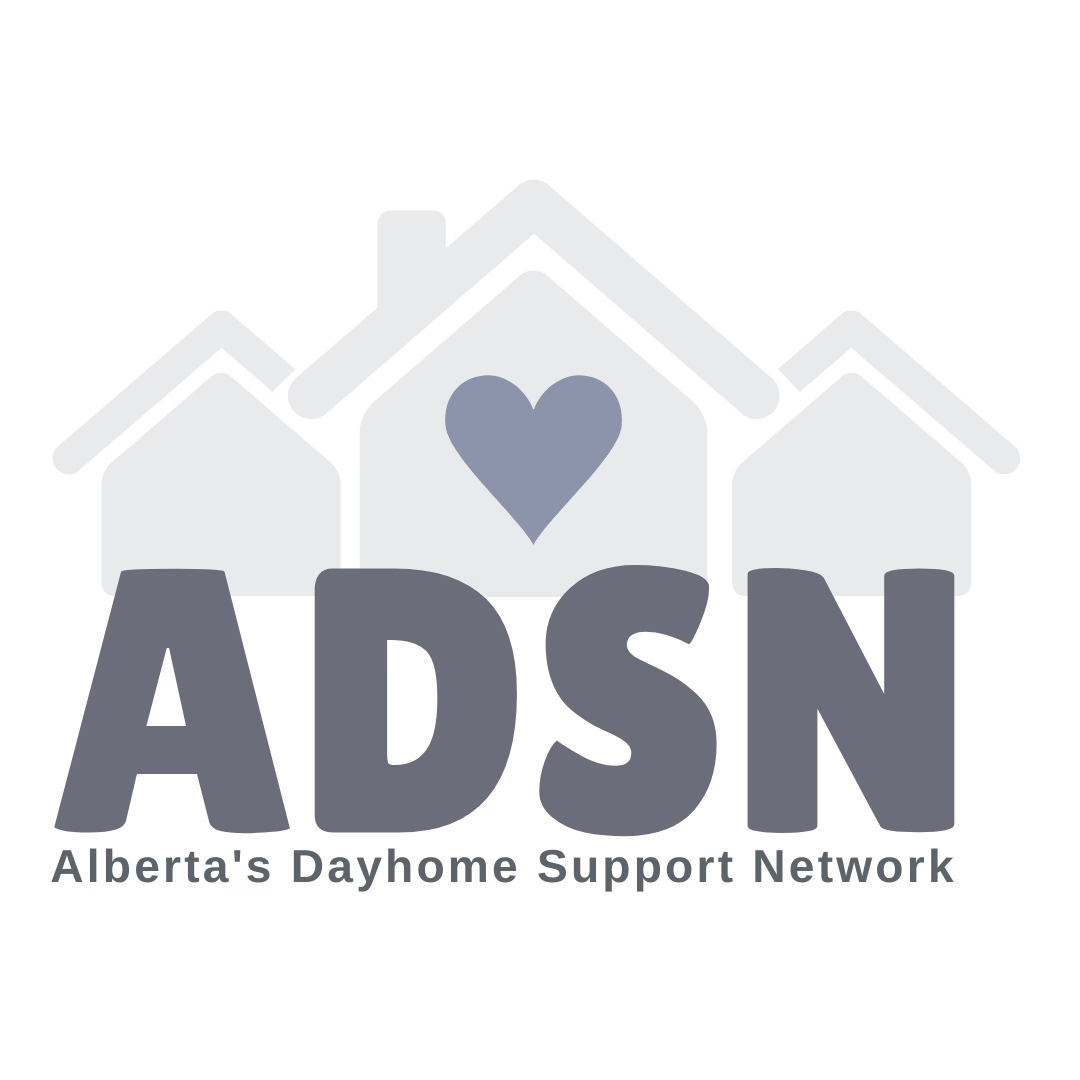
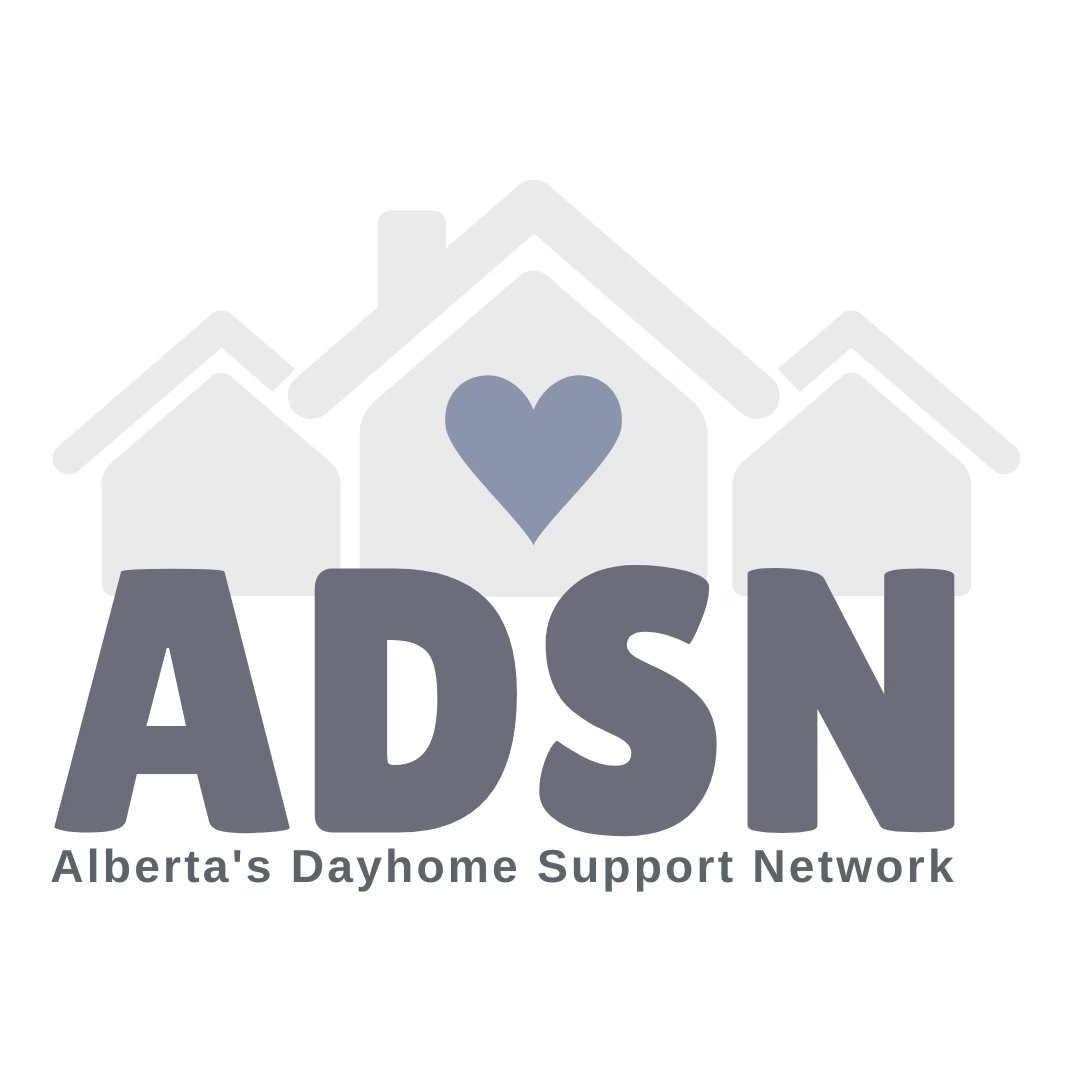
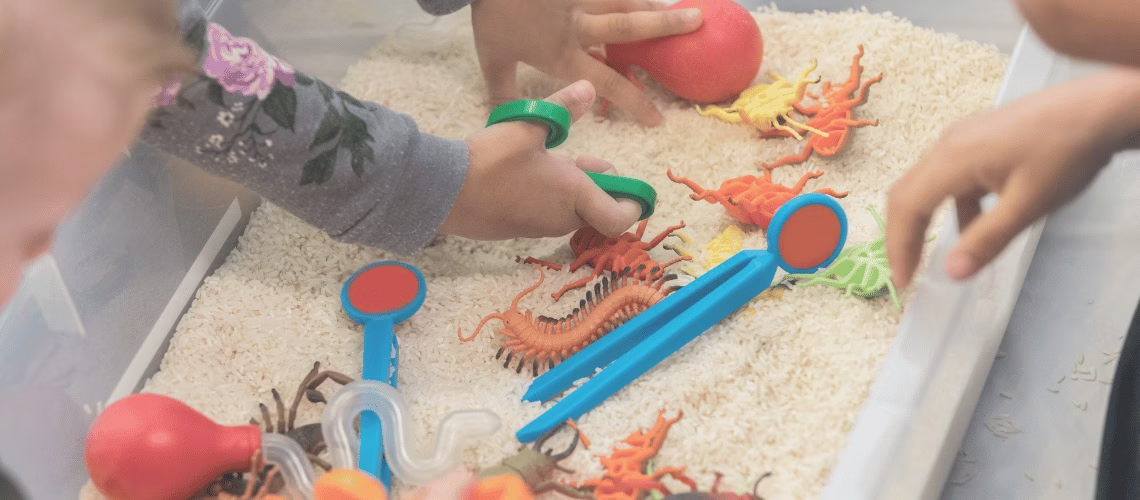



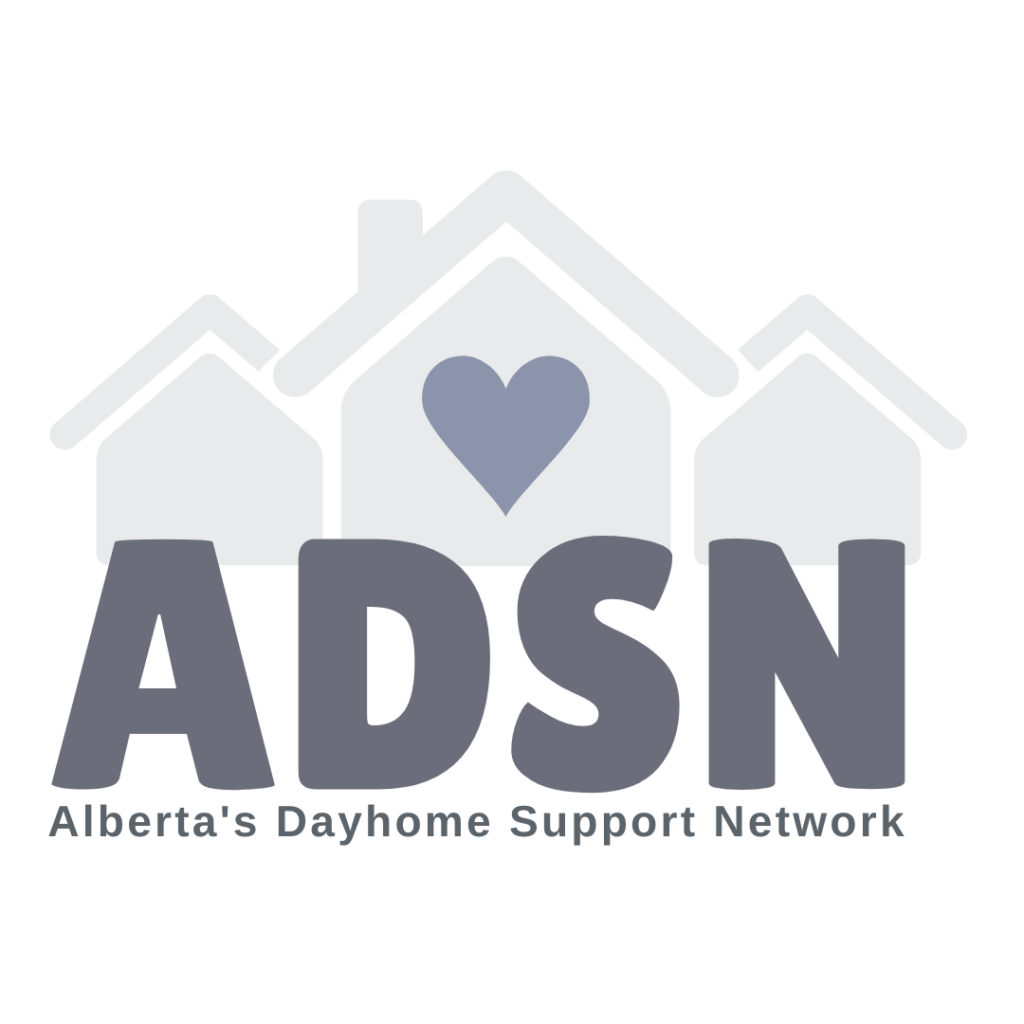
Responses